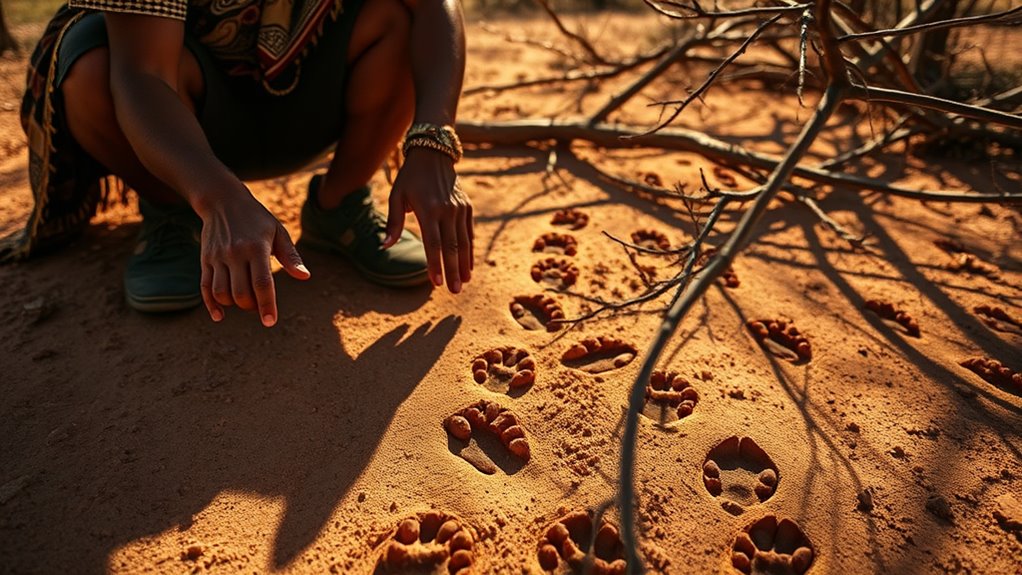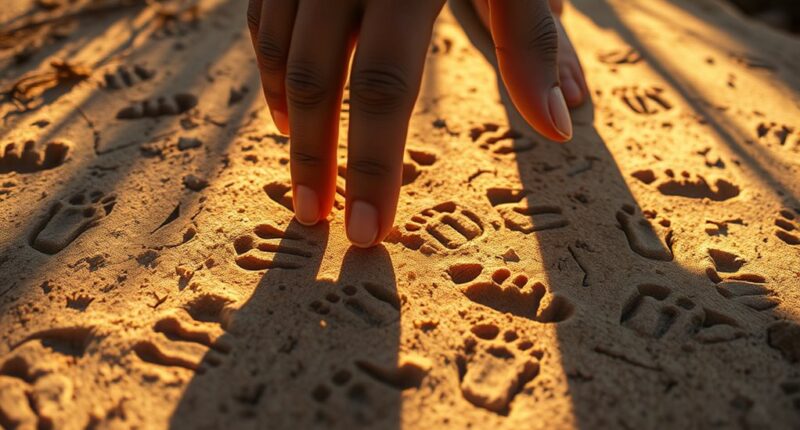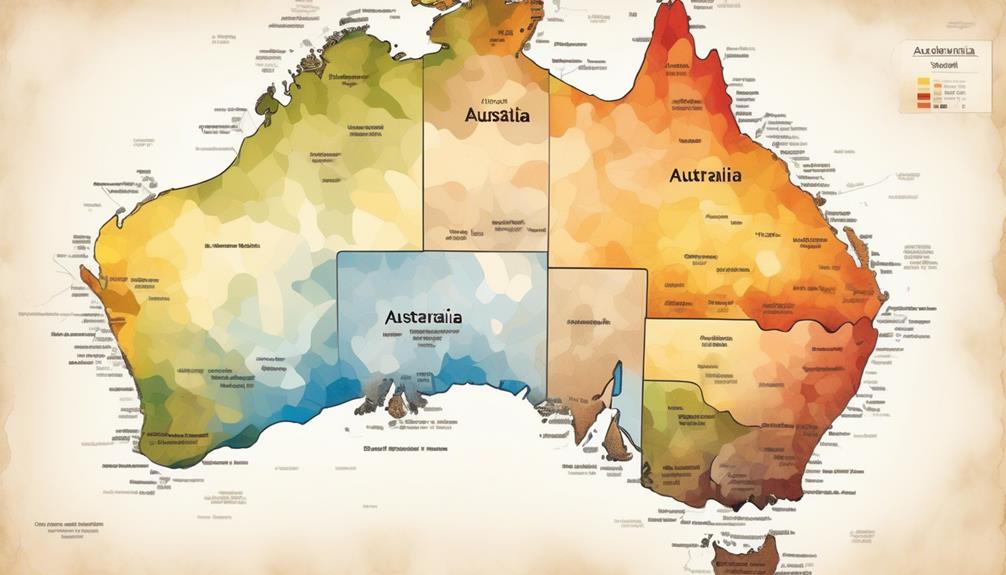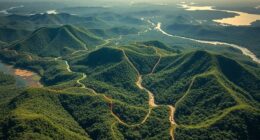You can interpret footprints much like reading an open book by applying Indigenous techniques that rely on sharp observation and environmental cues. By examining shape, depth, and stride, you uncover clues about the person’s size, weight, and movement. Remember, every footprint tells a story—how they walk, where they pause, or if they carry something. With deeper understanding, you’ll gain insight into their story, and if you keep exploring, you’ll discover even more about this fascinating skill.
Key Takeaways
- Aboriginal trackers analyze footprint shape, depth, and orientation to interpret movement, intent, and physical condition.
- They observe environmental clues like displaced soil, bent grass, and natural features to enhance tracking accuracy.
- Skilled trackers detect subtle impressions and terrain influences, using environmental contrasts to read footprints precisely.
- They combine traditional land connection knowledge with sensory awareness to interpret footprints as stories of movement.
- Overlapping tracks and stride patterns help trackers determine sequence, pauses, and whether individuals are cautious or hurried.

Aboriginal trackers possess a remarkable skill: the ability to read footprints with incredible accuracy. This skill isn’t just about noticing footprints; it’s about understanding what they reveal. You might think that tracking is simply spotting a footprint and following it, but for Aboriginal trackers, it’s a complex art rooted in indigenous methods and keen observation. They interpret subtle clues left behind by the environment and the individual’s steps, turning footprints into stories about movement, intent, and even emotion.
Your first step in understanding their approach is appreciating their deep knowledge of indigenous methods. These methods have been passed down through generations, combining oral traditions with a profound connection to the land. Trackers don’t just see a print; they see a puzzle. They analyze the shape, depth, and orientation of footprints, taking into account the terrain and weather conditions. For example, a slightly deeper impression on one side of the print might indicate a limp or a change in gait. The size and depth of the print can reveal the weight of the person, while the stride length may suggest their speed or whether they’re cautious or confident. They also pay attention to the direction of the footprints and any overlapping tracks, which help determine the sequence of movement and whether someone paused or turned.
Tracking techniques involve a combination of sensory awareness and learned skills. Aboriginal trackers use their sharp eyesight to detect faint impressions, sometimes even identifying footprints made on sandy or soft ground from a distance. They’re attuned to subtle signs—like a displaced leaf, a bent blade of grass, or disturbed soil—that can tell them more about the person’s size, footwear, or even whether they were carrying something. They also observe the environment carefully, noting how footprints interact with natural features like rocks or roots, which can give clues about the path taken or obstacles encountered. Moreover, their understanding of color contrast and how different terrains affect footprint visibility enhances their tracking precision.
Frequently Asked Questions
How Long Does It Take to Master Footprint Reading Skills?
Mastering footprint reading skills varies based on your dedication and exposure to tracking techniques. With consistent practice and active skill development, you might see improvements within months, but becoming truly proficient can take years. As you hone your tracking techniques, you’ll develop an intuitive understanding of footprints and environment. Patience and hands-on experience are key; with time, you’ll read footprints as easily as an open book.
Can Footprint Reading Be Used to Predict Animal Behavior?
Just like Sherlock Holmes decoding clues, you can use footprint reading to predict animal behavior through print pattern analysis. By studying footprints, you identify signs of predator-prey interactions, revealing an animal’s next move. Tracking patterns helps anticipate shifts in activity or location, offering insights into behavioral motivations. So, yes, footprint reading isn’t just about identification—it’s a window into future actions, much like reading the pages of an animal’s story.
Do Different Environments Affect Footprint Interpretation?
Different environments definitely influence how you interpret footprints. For instance, desert footprints often show sharper, well-preserved prints due to dry conditions, while rainforest tracks might be muddier and less clear. You need to adjust your reading based on these surroundings, noticing subtle clues in desert footprints or tracking the movement in lush rainforest tracks. Environment shapes the details, so understanding these differences is key to accurate interpretation.
Are There Cultural Significances Tied to Footprint Reading?
Did you know that Indigenous traditions often imbue footprints with symbolic meanings, making footprint reading deeply cultural? You might realize that, for Aboriginal trackers, each print is more than evidence—it’s a story tied to ancestral knowledge and spiritual beliefs. These footprints carry cultural significance, helping trackers understand not just movement, but also relationships and histories, reflecting a profound connection between the land, people, and their traditions.
How Do Trackers Distinguish Between Humans and Animals?
You use tracking techniques to distinguish between humans and animals by observing footprint symbolism, such as shape, size, and stride. Human footprints often show more deliberate patterns and specific footwear impressions, while animal tracks display claw marks and different gait. Aboriginal trackers pay close attention to these subtle differences, reading the footprints like a story, to identify who or what left them, applying their deep knowledge of local environment and tracking techniques.
Conclusion
As you walk away, remember that each footprint you’ve seen holds stories of resilience and connection. Like a silent language, they whisper truths of ancestors guiding us through time. When you look down at the earth, see it as a sacred book, waiting for you to read its pages with respect and wonder. In every mark, there’s a symbol of survival, unity, and the enduring spirit that binds us all to this land.









